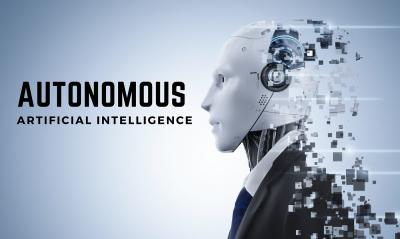Exploring the Exponential Autonomous AI and Autonomous Agents M
-
The breathtaking pace of the Autonomous AI and Autonomous Agents Market Growth is being fueled by a virtuous cycle of unprecedented breakthroughs in artificial intelligence research, surging business demand for automation, and the maturation of critical enabling technologies. At the heart of this growth is the rapid advancement in core machine learning algorithms, particularly in areas like deep reinforcement learning and the development of large-scale, pre-trained models such as Large Language Models (LLMs) and Vision Transformers. These models serve as the powerful cognitive engines or "brains" that allow autonomous agents to understand complex instructions, perceive their environment through various sensors, reason about the consequences of their actions, and learn from experience to improve their performance over time. The ability to fine-tune these massive foundational models for specific tasks has dramatically reduced the development time and data requirements for building capable autonomous systems, making the technology accessible to a much broader range of developers and organizations. This constant stream of innovation flowing from academic and corporate research labs directly translates into more capable and reliable agents, which in turn stimulates greater adoption and drives the market’s exponential growth curve.
This technological push is met with an equally powerful pull from the market, driven by an insatiable enterprise demand for hyper-automation, enhanced productivity, and radical cost reduction. In today's competitive global economy, businesses are under constant pressure to do more with less, and autonomous AI offers a transformative solution. In the logistics and supply chain sector, autonomous mobile robots and drones are being deployed to automate warehouse operations, from picking and packing to inventory management, operating 24/7 with a level of speed and accuracy that is impossible for human workers to sustain. In the financial services industry, autonomous agents are used for algorithmic trading, fraud detection, and automated risk analysis, processing market data and executing transactions in fractions of a second. In customer service, advanced AI agents are moving beyond simple chatbots to handle complex, multi-step customer journeys, resolving issues and performing tasks that previously required a human agent. The clear and compelling return on investment (ROI) from deploying these systems—measured in reduced labor costs, increased operational efficiency, and improved service quality—is a massive economic incentive that is driving widespread adoption across nearly every industry and fueling the market's rapid expansion.
The growth trajectory of autonomous AI is further accelerated by the parallel expansion of the underlying digital and physical infrastructure required for its deployment in the real world. The global rollout of 5G and future 6G networks is a critical enabler, providing the high-bandwidth, low-latency, and ultra-reliable connectivity that autonomous systems like self-driving cars and drones need to communicate with each other and with cloud-based intelligence in real-time. The rise of edge computing is another key infrastructural driver, allowing for powerful AI processing to be done directly on the device—be it a robot, a car, or a factory sensor—rather than sending data to a distant data center. This reduces latency, enhances privacy, and allows autonomous systems to operate even when disconnected from a network. Furthermore, the development of sophisticated simulation platforms allows developers to train and test their autonomous agents in realistic virtual environments at a massive scale, safely and cost-effectively, before deploying them in the physical world. The synergistic maturation of these networking, computing, and simulation technologies creates the robust and scalable foundation necessary for the autonomous AI market to continue on its path of explosive growth.
